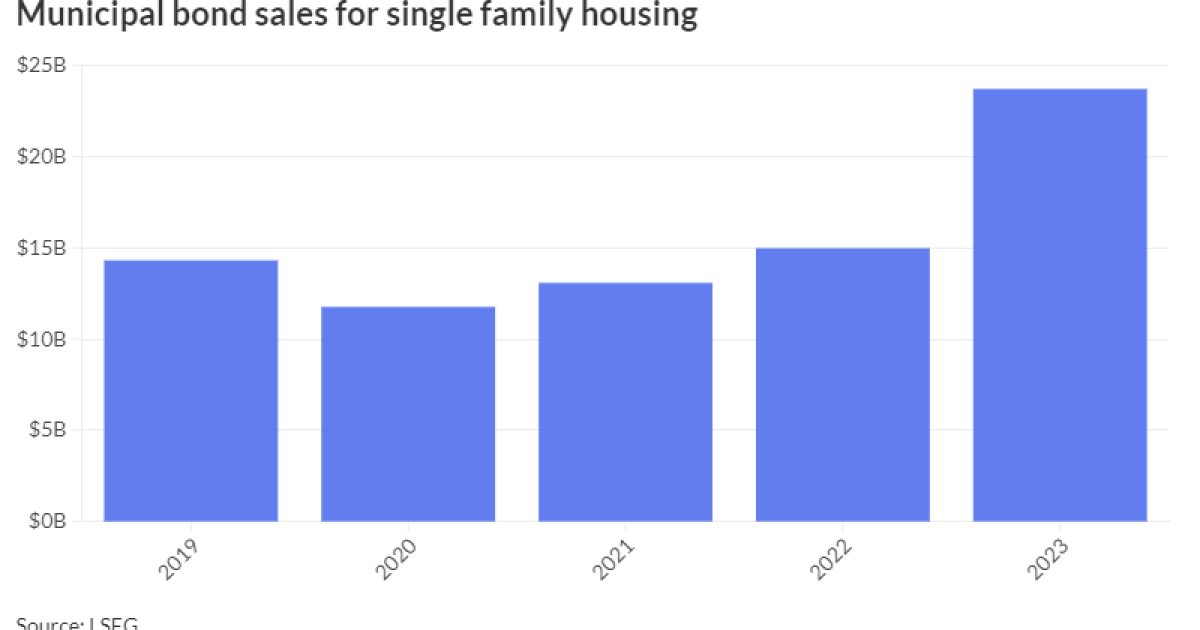North Dakota housing finance deal reflects broader rise in issuance
4 min read

When North Dakota in February issued two new series of multi-million-dollar housing finance bonds, its second such issuance in the last four months, it was both catering to a need for housing assistance and capitalizing on favorable market conditions.
Ansel Caine, municipal advisor at Caine Mitter, a New York City-based firm that works with state housing finance agencies, said the North Dakota deal, on which his firm advised, is part of a broader increase in issuance of mortgage revenue bonds.
Such bonds tend to be countercyclical, he said. Whereas the rest of the market will hike issuance when interest rates are low, mortgage revenue bonds usually have the reverse dynamic.
“Mortgages financed with mortgage revenue bonds have a greater value relative to the private sector when interest rates are high, and therefore the value of tax exemption is also high,” Caine said. “The other element is that mortgage revenue bonds also tend to work really well when the yield curve is flat, which also makes the product that HFAs can offer more attractive.”
Municipal bond issuance for single-family housing was $23.7 billion in 2023, up from $11.8 billion in 2020, according to data from LSEG. And with the present moment offering both high interest rates and a flat yield curve, the time is ripe for more such issuance.
“Certainly the volume of issuance has gone up because the demand for their mortgage product is greater,” Caine said. “And we’re seeing that across the country. In 2023, mortgage revenue bond issuance was up 50% relative to 2022.”
Don Bernards, partner in Baker Tilly’s real estate group, said they are “seeing more tax-exempt mortgage revenue bonds issued than ever.” He cited a number of factors, among them the overall need for housing and increasing project costs and rents, leading to more debt per unit than in the past.
“Another factor is that there are over 20 states that have some type of state low-income housing tax credit that often pairs with the 4% credit, making these tax-exempt bond projects more financially feasible,” he said. “Over the past couple of years, [American Rescue Plan Act] funds have also helped fill gaps in these bond projects.”
RBC Capital Markets was lead underwriter on North Dakota’s $189 million February sale for the North Dakota Housing Finance Agency.
Managing Director Cory Hoeppner agreed that state housing finance agencies are ratcheting up issuance all over the U.S. As the broader mortgage market has tightened lending standards, he said, the need for various forms of assistance has grown. And because HFAs can borrow in the tax-exempt market, while the broader mortgage market cannot, they have an advantage in these times.
“Many HFAs increased the amount of down payment assistance they provide in order to keep up with higher rates, thus helping the affordability gap,” he said.
The Federal Reserve has hiked interest rates
RBC Capital Markets as lead underwriter was joined by Fidelity Capital Markets, JPMorgan Securities and Raymond James & Associates. Caine Mitter is municipal advisor and Kutak Rock LLP is bond counsel.
The tax-exempts priced at par to yield between 3.1% for the January 2025 maturity and 3.4% for the July 2029 maturity,
The negotiated deal is backed by NDHFA’s revenues, according to
North Dakota’s housing finance programs are a local response to a nationwide problem. Of course, each region has its own specific housing issues, Caine said. But the biggest distinction he sees from his vantage is the urban versus rural divide. To varying degrees, housing affordability has always been an issue in major cities, but now “you’re seeing affordability becoming a bigger issue in suburban and rural areas as well,” he said.
In North Dakota — which just took advantage of the current environment to issue
“The timing of the bonds depends on the timing of reservations, which have continued to remain strong over the past few months,” she said. “Therefore, for cash flow purposes, our pipeline of loans to fund requires that we issue additional bonds.”
Through the programs funded by the bonds, Axtman said, North Dakota can offer lower interest rates and down payment assistance.
“There is demand for mortgage revenue bonds, but a lot of this depends on how other markets are performing, when investors have cash available and how we structure our bond deals, just to name a few things,” she added. “Investors are being much more specific on what they want.”
Caine said the North Dakota program “is a great example of how HFAs can be effective in addressing the lack of affordability within the housing market at the current time.”







